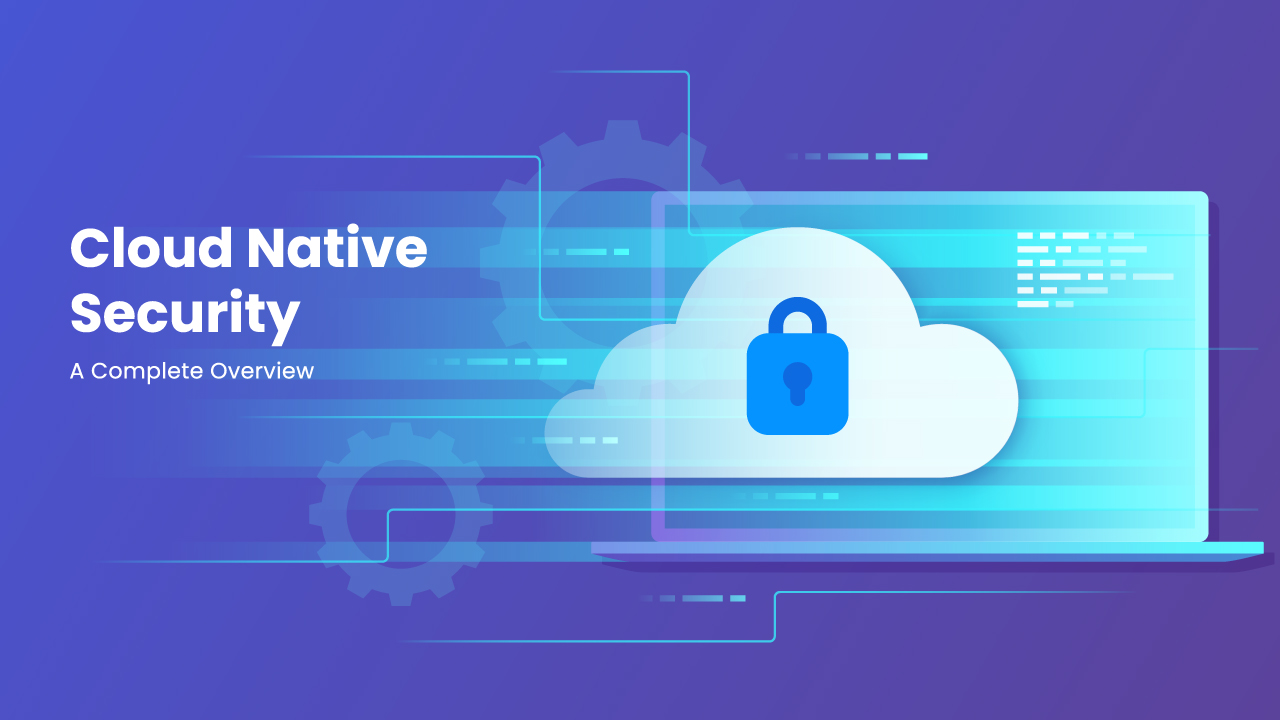
-
Table of Contents
“Protecting your cloud-native applications in the ever-evolving digital landscape.”
Introduction
Cloud-native security refers to the practice of securing applications and data in distributed environments, specifically in cloud-native architectures. As organizations increasingly adopt cloud computing and containerization technologies, the need for robust security measures becomes paramount. Cloud-native security focuses on protecting applications, data, and infrastructure in dynamic and scalable environments, where applications are built using microservices, containers, and serverless computing. This approach ensures that security is integrated into every aspect of the application development and deployment lifecycle, enabling organizations to mitigate risks and protect their assets in the cloud.
Best Practices for Implementing Cloud-Native Security in Distributed Environments
Cloud-Native Security: Securing Applications in Distributed Environments
In today’s digital landscape, where businesses are increasingly relying on cloud computing and distributed environments, ensuring the security of applications has become a top priority. With the rise of cloud-native architectures, which are designed to take full advantage of the scalability and flexibility of the cloud, new security challenges have emerged. In this article, we will explore the best practices for implementing cloud-native security in distributed environments.
One of the key principles of cloud-native security is the concept of defense in depth. This means implementing multiple layers of security controls to protect applications and data from various threats. In a distributed environment, this becomes even more critical, as applications are spread across multiple cloud providers, data centers, and edge locations. By implementing a combination of network security, identity and access management, and application-level security controls, organizations can create a robust security posture.
Network security is a fundamental aspect of cloud-native security. Organizations should implement secure network architectures, such as virtual private clouds (VPCs) and network segmentation, to isolate applications and data from potential threats. Additionally, deploying firewalls, intrusion detection systems, and distributed denial-of-service (DDoS) protection mechanisms can help detect and mitigate network-based attacks.
Identity and access management (IAM) is another crucial component of cloud-native security. Organizations should adopt a least privilege approach, granting users and applications only the permissions they need to perform their tasks. Implementing strong authentication mechanisms, such as multi-factor authentication, can further enhance the security of user accounts. Additionally, organizations should regularly review and revoke unnecessary privileges to minimize the risk of unauthorized access.
Application-level security controls are essential for protecting cloud-native applications. Organizations should implement secure coding practices, such as input validation and output encoding, to prevent common web application vulnerabilities, such as cross-site scripting (XSS) and SQL injection. Regular vulnerability scanning and penetration testing can help identify and remediate any security weaknesses in applications. Furthermore, organizations should leverage containerization technologies, such as Docker and Kubernetes, to isolate applications and limit the impact of potential security breaches.
In a distributed environment, monitoring and logging play a crucial role in detecting and responding to security incidents. Organizations should implement centralized logging and monitoring solutions to collect and analyze security events from various sources, such as network devices, servers, and applications. By leveraging machine learning and artificial intelligence, organizations can detect anomalous behavior and potential security threats in real-time. Additionally, organizations should establish an incident response plan and regularly conduct tabletop exercises to ensure a swift and effective response to security incidents.
Lastly, organizations should prioritize security awareness and training for their employees. Human error remains one of the leading causes of security breaches. By educating employees about common security threats, such as phishing attacks and social engineering, organizations can significantly reduce the risk of successful attacks. Regular security awareness training sessions and simulated phishing campaigns can help reinforce good security practices among employees.
In conclusion, securing applications in distributed environments requires a comprehensive and multi-layered approach. By implementing network security, identity and access management, and application-level security controls, organizations can create a robust security posture. Additionally, monitoring and logging, along with security awareness and training, are essential for detecting and responding to security incidents. By following these best practices, organizations can ensure the security of their cloud-native applications in distributed environments.
Key Challenges and Solutions for Securing Applications in Cloud-Native Architectures
Cloud-Native Security: Securing Applications in Distributed Environments
Key Challenges and Solutions for Securing Applications in Cloud-Native Architectures
As organizations increasingly adopt cloud-native architectures, securing applications in distributed environments has become a critical concern. Cloud-native applications are designed to leverage the scalability and flexibility of the cloud, but this also introduces new security challenges. In this article, we will explore some of the key challenges faced in securing cloud-native applications and discuss potential solutions.
One of the primary challenges in securing cloud-native applications is the dynamic nature of these environments. Traditional security measures are often ill-equipped to handle the constant changes and updates that occur in cloud-native architectures. Applications are frequently deployed, scaled, and updated, making it difficult to maintain a consistent security posture. To address this challenge, organizations need to adopt a security approach that is as dynamic as the cloud-native environment itself.
Another challenge is the increased attack surface that comes with distributed architectures. Cloud-native applications are composed of multiple microservices that communicate with each other over networks. This distributed nature creates more entry points for potential attackers. Additionally, the use of containers and orchestration platforms introduces new vulnerabilities that need to be addressed. To mitigate these risks, organizations should implement strong network security measures, such as network segmentation and encryption, to protect against unauthorized access and data breaches.
Securing data in transit and at rest is another critical challenge in cloud-native architectures. With data flowing between multiple microservices and being stored in various locations, ensuring its confidentiality and integrity becomes paramount. Encryption is a key solution to this challenge, as it protects data both in transit and at rest. Implementing encryption mechanisms, such as Transport Layer Security (TLS) for data in transit and encryption at the storage layer for data at rest, can help safeguard sensitive information.
Identity and access management (IAM) is also a significant concern in cloud-native architectures. With multiple microservices and containers interacting with each other, it becomes crucial to ensure that only authorized entities can access resources. Implementing a robust IAM system that includes strong authentication and authorization mechanisms is essential. This can involve using technologies like multi-factor authentication, role-based access control (RBAC), and centralized identity providers to manage access to resources.
Monitoring and visibility are vital for detecting and responding to security incidents in cloud-native environments. With the distributed nature of these architectures, it can be challenging to gain a comprehensive view of the entire system. Organizations should invest in security monitoring tools that provide real-time visibility into the network, containers, and applications. These tools can help identify anomalies, detect potential threats, and enable timely incident response.
Lastly, organizations must prioritize security throughout the software development lifecycle (SDLC) in cloud-native architectures. Security should be integrated into every stage of the SDLC, from design to deployment. This includes conducting regular security assessments, performing vulnerability scanning, and implementing secure coding practices. By adopting a proactive security approach, organizations can minimize the risk of vulnerabilities and ensure that applications are secure from the start.
In conclusion, securing applications in cloud-native architectures presents unique challenges that require specific solutions. Organizations must address the dynamic nature of these environments, protect against increased attack surfaces, secure data in transit and at rest, implement robust IAM systems, ensure monitoring and visibility, and prioritize security throughout the SDLC. By adopting these measures, organizations can enhance the security of their cloud-native applications and protect against potential threats in distributed environments.
The Role of Automation in Enhancing Cloud-Native Security for Distributed Applications
Cloud-native security is a critical aspect of protecting applications in distributed environments. As organizations increasingly adopt cloud-native architectures, it becomes imperative to implement robust security measures that can effectively safeguard these applications. One key element in enhancing cloud-native security is the role of automation.
Automation plays a crucial role in streamlining security processes and ensuring consistent application of security controls. With the dynamic nature of cloud-native environments, manual security practices can be time-consuming and error-prone. Automation helps overcome these challenges by automating security tasks, such as vulnerability scanning, patch management, and configuration management.
By automating these tasks, organizations can ensure that security controls are consistently applied across all applications and environments. This reduces the risk of human error and ensures that security measures are not overlooked or forgotten. Additionally, automation enables organizations to respond quickly to security incidents by automating incident response processes, such as threat detection and mitigation.
Furthermore, automation can help organizations achieve compliance with industry regulations and standards. By automating security controls, organizations can easily demonstrate compliance and generate audit reports. This not only saves time and effort but also ensures that security measures are consistently enforced.
Another benefit of automation in cloud-native security is scalability. As organizations scale their cloud-native applications, manual security practices become increasingly challenging to manage. Automation allows organizations to scale security measures alongside application growth, ensuring that security controls are effectively applied regardless of the size or complexity of the environment.
Moreover, automation can help organizations detect and respond to security threats in real-time. By continuously monitoring and analyzing security logs and events, automated security systems can quickly identify suspicious activities and trigger immediate response actions. This proactive approach to security significantly reduces the time between detection and response, minimizing the potential impact of security incidents.
However, it is important to note that automation alone is not sufficient to ensure robust cloud-native security. It should be complemented with other security measures, such as encryption, access controls, and network segmentation. These additional layers of security work in conjunction with automation to provide a comprehensive security framework for cloud-native applications.
In conclusion, automation plays a crucial role in enhancing cloud-native security for distributed applications. It streamlines security processes, ensures consistent application of security controls, and enables quick response to security incidents. Automation also helps organizations achieve compliance and scalability while reducing the risk of human error. However, it should be complemented with other security measures to provide a comprehensive security framework. By leveraging automation in cloud-native security, organizations can effectively protect their applications in distributed environments and mitigate the evolving threat landscape.
Conclusion
In conclusion, cloud-native security is essential for securing applications in distributed environments. As organizations increasingly adopt cloud computing and containerization technologies, they must prioritize the implementation of robust security measures to protect their applications and data. Cloud-native security involves a combination of practices, tools, and technologies designed to address the unique challenges of securing applications in distributed environments. This includes implementing strong access controls, encrypting data, monitoring for threats and vulnerabilities, and ensuring compliance with industry regulations. By adopting cloud-native security practices, organizations can mitigate risks and safeguard their applications and data in distributed environments.




